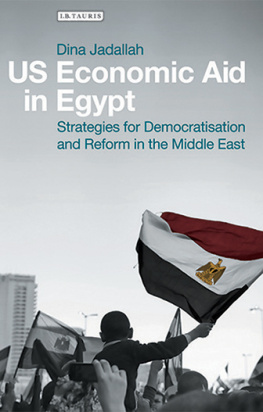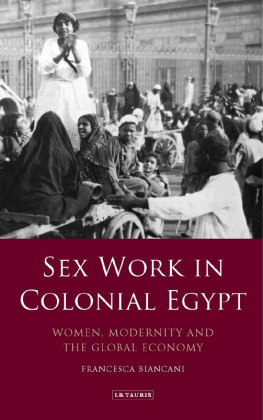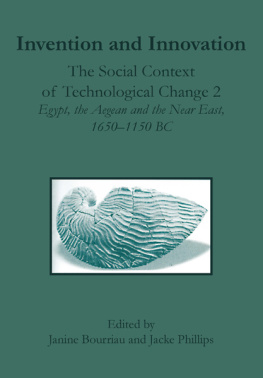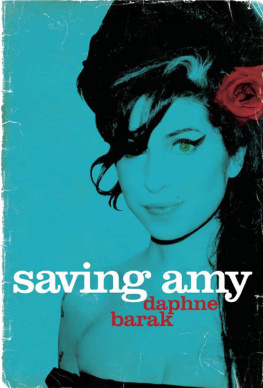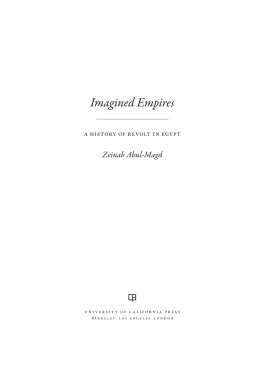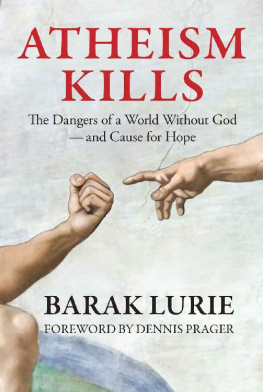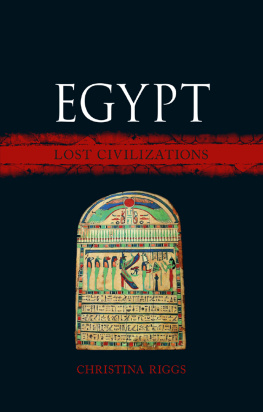On Time
The publisher gratefully acknowledges the generous support of the Ahmanson Foundation Humanities Endowment Fund of the University of California Press Foundation.
On Time
TECHNOLOGY AND TEMPORALITY
IN MODERN EGYPT
On Barak

UNIVERSITY OF CALIFORNIA PRESS
BERKELEYLOS ANGELESLONDON
University of California Press, one of the most distinguished university presses in the United States, enriches lives around the world by advancing scholarship in the humanities, social sciences, and natural sciences. Its activities are supported by the UC Press Foundation and by philanthropic contributions from individuals and institutions. For more information, visit www.ucpress.edu.
University of California Press
Berkeley and Los Angeles, California
University of California Press, Ltd.
London, England
2013 by The Regents of the University of California
Library of Congress Cataloging-in-Publication Data
Barak, On.
On time : technology and temporality in modern Egypt / On Barak.
p. cm.
Revised version of the authors dissertationNew York University, 2009.
Includes bibliographical references and index.
ISBN 978-0-520-27613-0 (cloth : alk. paper)
ISBN 978-0-520-27614-7 (pbk. : alk. paper)
ISBN 978-0-520-95656-8 (ebook)
1. EgyptHistoryBritish occupation, 18821936. 2. EgyptSocial conditions19th century. 3. EgyptSocial conditions20th century. 4. TimeSocial aspectsEgypt. 5. Time perception Social aspectsEgypt. 6. TechnologySocial aspectsEgypt. I. Title.
DT107.B3662013
962.04dc232013010761
Manufactured in the United States of America
21 20 19 18 17 16 15 14 13
10 9 8 7 6 5 4 3 2 1
In keeping with a commitment to support environmentally responsible and sustainable printing practices, UC Press has printed this book on Rolland Enviro100, a 100% postconsumer fiber paper that is FSC certified, deinked, processed chlorine-free, and manufactured with renewable biogas energy. It is acid-free and EcoLogo certified.
To my family, old and new
CONTENTS
ILLUSTRATIONS
MAPS
FIGURES
ACKNOWLEDGMENTS
The engagement, insightfulness, and sheer number of friends, teachers and interlocutors who nourished this book in its different stages troubles conventional notions of authorship. The mentorship, and gradually also the friendship of my advisor Khaled Fahmy, Zachary Lockman, Timothy Mitchell, Michael Gilsenan, and Arvind Rajagopal turned New York University into the best place in the world for writing a dissertation in modern Egyptian history. My deepest thanks also go to Waiel Ashry, Zvi Ben-Dor Benite, James Baldwin, Omar Cheta, Leena Dallasheh, Noah Haiduc-Dale, Rania Jawad, Hanan Kholoussy, Elias Khoury, Tamer el-Leithy, David Ludden, Jeanne Miller, Molly Nolan, Chris Otter, Leslie Peirce, Everett Rowson, Sherene Seikaly, Robin Shulman, Karim Tartoussieh, Sarah Tunney, Peter Valenti, and Helena Wright, who together and apart, at times briefly and at others in a sustained fashion, made my years in New York truly inspiring and supportive.
The Society of Fellows at Princeton offered a utopian milieu to think, discuss, research and transform the dissertation into a book. My thanks go especially to Lucia Allais, Leonard Barkan, Scott Burnham, Eduardo Canedo, the late Jim Clark, Isabelle Clark-Decs, Yaacob Dweck, Mischa Gabowitsch, Simon Grote, Mary Harper, Russ Leo, Susan Stewart, and Kerim Yasar.
The interdisciplinarity of the society was supplemented by two complementing kinds of disciplinary rigor, courtesy of the History and the Near Eastern Studies Departments at Princeton. I am grateful to Michael Cook, Katharina Ivanyi, Cyrus Schayegh, Daniel Stolz (who helped me edit the manuscript), Muhammad Qasim Zaman, Max Weiss, Elizabeth Bennett, D. Graham Burnett, Angela Creager, Michael Gordin, Anthony Grafton, Molly Greene, Katja Guenther, Robert Karl, Judith Laffan, Michael Laffan, Jonathan Levy, Yair Mintzker, Bhavani Raman, Susan Naquin, Gyan Prakash, and Keith Wailoo.
Many other friends, colleagues, and family members in the United States, Israel, Egypt, and Europe are less easily classifiable but not less supportive: the late Nasr Abu Zayd, Marc Ayms, Elif Babul, Mriam Belli, Yael Berda, Crystal Biruk, Lucrezia Botton, Lisa Cody, Yoav Di-Capua, Ed Eigen, Tomer Gardi, Israel Gershoni, Angie Heo, Wilson Chacko Jacob, Aaron Jakes, Rebecca Johnson, Abdelfattah Kilito, Noam Korin, Liat Kozma, Lital Levy, Dotan Leshem, Lisa Onaga, Wen-Chin Ouyang, Nancy Reynolds, Michal Shapira, Gilad Seliktar, Yael Schacher, Eve M. Troutt Powell, Avner Wishnitzer, Rhona and Arthur Wexler, P.S. van Koningsveld, and Gerard Wiegers.
Research in Egypt, the United Kingdom, the United States, and Israel during 20062007 was made possible by a National Science Foundation Dissertation Improvement Grant and a Social Science Research Council International Dissertation Research Fellowship. NYUs Graduate School of Arts and Sciences provided various research and writing scholarships, including a Henry M. MacCracken Fellowship, a Pre-Dissertation Research Award, and a Deans Dissertation Fellowship. The Department of Middle Eastern and Islamic Studies provided summer funds and various teaching opportunities. The Princeton University Committee on Research in the Humanities and Social Sciences helped fund several research trips and editorial services. The Department for Middle Eastern and African History at Tel Aviv University helped with image production costs. I would like to thank the staffs of the Egyptian National Library, the Egyptian Geographical Society, the library of the Centre dtudes et de Documentation conomique, Juridique, et Sociale in Cairo, the American University in Cairo Library, Maktabat al-Qahira al-Kubra, the Bibliotheca Alexandrina, the Egyptian Railway Museum, the British National Archives, the British Library, the BBC Library, the London School of Economics Library, the SOAS Library, Yale University Library, Princeton University Library, New York Public Library, and the Jewish National and University Library in Jerusalem. I am especially thankful for the kindness shown to me by the staff of the periodical room of the Egyptian National Library, where I spent the longest research period. At University of California Press, I would like to thank all those who helped bring this book to press: Niels Hooper, Kim Hogeland, Elizabeth Berg, and Suzanne Knott.
My family has always been my most stimulating and supportive community. Avishai Ehrlich, Lesley Marks, Ayelet Barak, Ofir Nahum, Chen Barak, Dvora Barak, Moshe Barak, Galit Seliktar, and Tamuz Barak, this book is for you.
NOTE ON TRANSLITERATION
Arabic words are transliterated based on a modified version of the system of the International Journal of Middle East Studies. I omit the diacritic for the initial hamzah (), and use ah for t marbah (in the construct form, at ). Occasionally, to indicate colloquial Egyptian Arabic, I transcribe qf (q) as hamzah () and jm (j) as gm (g). Standard English versions of certain personal names have been preserved (e.g., Naguib Mahfouz, rather than Najb Maf).

MAP 1. Routes of the British India traffic.

MAP 2. Cairo, c. 1930. Adapted from Alexander Nicohossof s Map of Cairo (1932) and Mir al-adthah al-Muawwarah (AprilMay 1928).
INTRODUCTION
Another Time?
ONE AFTERNOON IN THE SUMMER of 2006, during my research in Cairo, I headed to the cinema with two Italian friends. Before entering the theater, we rushed to buy sandwiches from a nearby kofta place. How long will it take? asked one of my friends in heavily accented Arabic. We have a film to catch. Only five minutes, said the kiosk owner as he started throwing meat on the grill. Then he added, Dont worry, five minutes American time, not Egyptian time [wat mar].
Next page

